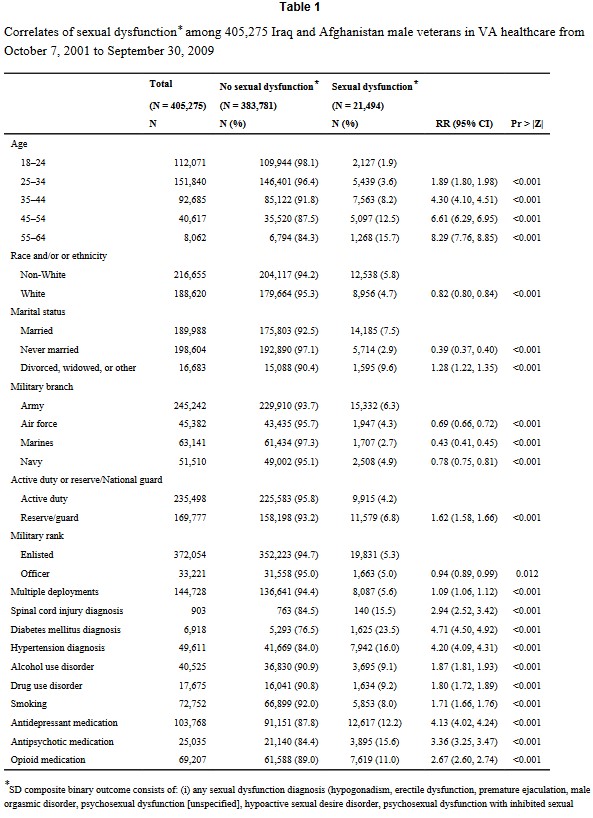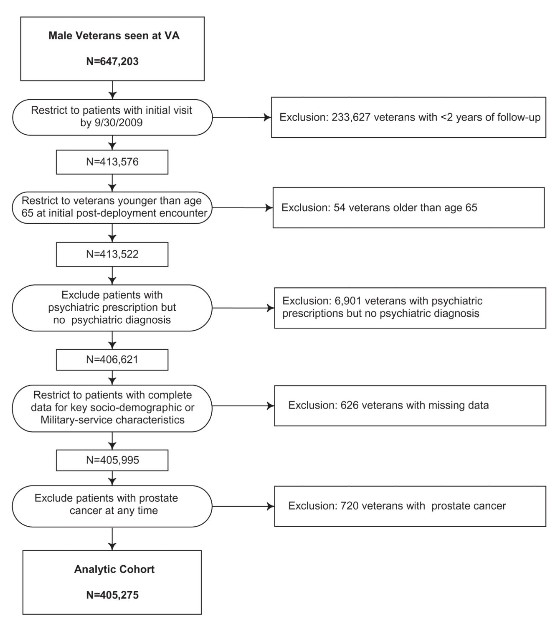Association with Posttraumatic Stress Disorder and Other Combat-Related Mental Health Disorders: A Population-Based Cohort Study
(PDF)
J Sex Med. 2014 January ; 11(1): 75–83

Aims: We sought to determine the prevalence and correlates of sexual dysfunction among male Iraq and Afghanistan veterans.
Methods: We performed a retrospective cohort study of 405,275 male Iraq and Afghanistanveterans who were new users of U.S. Department of Veterans Affairs healthcare from October 7,2001 to September 30, 2009 and had 2-year follow-up
Main Outcome Measures: We determined the independent association of mental healthdiagnoses and sexual dysfunction after adjusting for sociodemographic and military servicecharacteristics, comorbidities, and medications.
Results: Veterans with PTSD were more likely to have a sexual dysfunction diagnosis, beprescribed medications for sexual dysfunction, or both (10.6%), compared with veterans having amental diagnosis other than PTSD (7.2%), or no mental health diagnosis (2.3%). In a fullyadjusted model, PTSD increased the risk of sexual dysfunction by more than threefold (adjustedrisk ratio = 3.61, 95% CI = 3.48–3.75). Veterans with mental health disorders, particularly PTSD,were at the highest risk of sexual dysfunction when prescribed psychiatric medications (adjustedrisk ratio = 4.59, 95% CI = 4.41–4.77).
Conclusion: Among U.S. combat veterans, mental health disorders, particularly PTSD,increased the risk of sexual dysfunction independent of the use of psychiatric medications.
Figure 1. Cohort derivation
